What is the Law of Similarity?
The Law of Similarity is another excellent Gestalt psychology principle that elite artists can use in their art to create unity and rhythm. It’s not just the unity caused by similar colors and shapes…it goes deeper than that. It’s a secret the master painters used to their advantage in order to provoke an emotional response in the viewer.
A nerdy way of describing the Law of Similarity (nothing against nerds…I’m kinda nerdy too) is to say that the mind will group objects together if they share similarities. A generic example of this would be a red apple next to a bunch of tomatoes. That seems pretty obvious, but hear me out.
Knowing Gestalt psychology is like being the chef at a Michelin star restaurant. The guest doesn’t understand how you cooked the exquisite dish, but they’re enjoying every mouth-watering bite.
The painting below, by Paul Cezanne, has many round objects in a basket that are grouped together automatically. The mind thinks, “round objects, colored red and green, in a basket (quickly process according to symbols developed since childhood)…..I’m seeing fruit.” Only until we look closer, do we see that some might be peaches, apples, pears, or limes.
Being aware of the way the mind automatically processes this visual stimuli allows us to create unity or illusions when we need.
For example, Cezanne could’ve created a different story if he painted a hand grenade the same color as the green apples. The mind would’ve automatically grouped them together because of the Law of Similarity.
But as mentioned earlier, this goes much deeper…
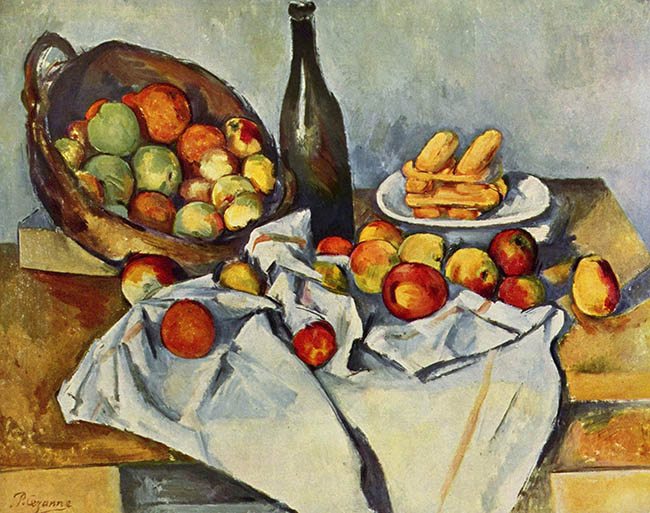
THE LAW OF SIMILARITY PROVOKES EMOTION
Have you ever looked at a painting and felt an emotional response; not because of the subject matter, but something that you couldn’t quite identify? What do you think it was? Well, the Law of Similarity is probably the technique you were experiencing.
There are a few different techniques that can provoke emotion in a hidden way (see Day 353), and gamut is one of them. Gamut adheres to the Law of Similarity, and it refers to the repeating diagonals within a painting or photo. They are usually hidden within the different elements of the composition, and the pose of the characters within it. These repeating diagonals are also derived from the basic armature of any dynamic symmetry grid.
We can see this in the painting below, by William-Adolphe Bouguereau. Do you feel anything when you see this? Next, we’ll look at the way he uses gamut to accomplish his needs.
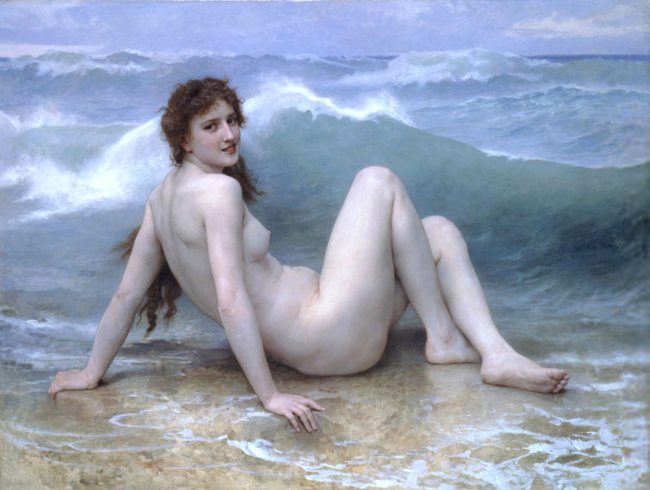
Bouguereau uses three root 5 dynamic symmetry grids next to each other. Do you see how the legs and arms repeat the major diagonals of the grids? This is how he creates rhythm and potentially provokes a positive emotion within the viewer.
Bouguereau is in full control of the way someone views his painting. Being in full control of visual perception is like having a super power! Cool right?
So, how can we use it in photography?
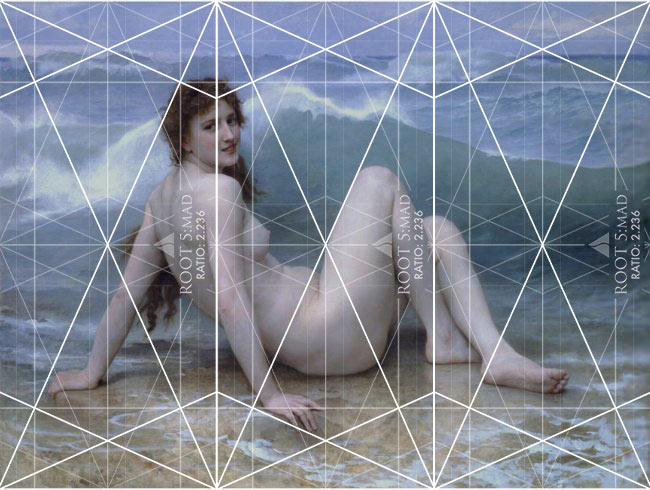
In this next excellent photo, by fashion photographer Annie Leibovitz, we can see how she repeats the diagonals of the waterfall in the model’s pose and dress. This is the Law of Similarity at work, and gamut is the hidden technique every artist should use in conjunction with the other Gestalt theories…all covered within the video series.
Wanna learn more about how to control the way people see your photos or paintings? Consider grabbing the Gestalt Psychology video collection. You won’t find anything else like it in the world, and it will seriously make you see things differently…forever.
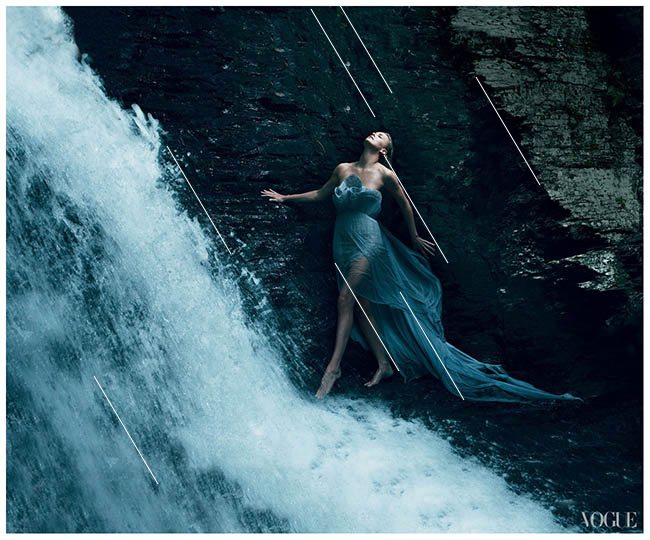
STATEMENTS ABOUT GESTALT PSYCHOLOGY PRINCIPLES
Here are some inspiring emails from artists wanting to advance to the master level!
*****
Hi Tavis,
Thank you so much, I can’t wait to get started! A couple of months ago I read an article by New York photographer Chris Knight (also boyfriend of fashion photographer and CreativeLive educator Lindsay Adler) which mentioned the Gestalt theory and triggered my curiosity. Through quite a lot of searching for more information I ended up on your site and to be honest, I’m probably more excited than on the day someone told me very kindly I needed to learn about lighting.
As a photographer I have always (until now) focused on technique, lighting, posing, expression, etc, etc, to improve my images, but always relied on “intuition” and the rule of thirds for composition. So I am very grateful for your information on the matter, especially as it seems to be overlooked by many of my colleagues.
Very best wishes,
Ernesta
*****
Hi Tavis, I have been diving into your work religiously in my off time and I can already tell I’ve struck gold. What you have created is exactly what I was looking for which I couldn’t find elsewhere. I remember stumbling upon some gestalt info in the past but it was related to graphic design and I dismissed it because I couldn’t easily relate it to my own art, but you go through and show exactly how it relates to 2d art in a way that is easy to digest and apply, and the dynamic symmetry has been blowing my mind. It’s one of those moments where I can tell my art is going to take a quantum leap forward as long as I do everything I consciously can to master this methodology. I am truly thankful for your work and effort in creating this, my friend.
Thanks again Tavis!
Daniel Dust
*****
Hi Tavis,
I was able to download the rest of the Gestalt Video Collection! Watched them all already. Can’t wait to start applying them to my work!
Thank you once again, ?
Reenashan
What Does the Video Cover?
This fourth video covers the Law of Similarity, a technique used for mastering composition. With plenty of examples and on-location photo sessions (photos below) we will demonstrate how to effectively use techniques such as unifying contrasting objects, finding repeating intervals, gamut, patterns, arabesques, dynamic symmetry, ellipses, and more. These are all the same techniques used by master painters and they can be applied to your art, whether it’s photography, painting, graphic design, or sculpting to clearly communicate to your viewer with power. This Law of Similarity video will help you reach the master level!
*Pre-Requisite – since Gamut greatly relates to the dynamic symmetry of root rectangles (see Day 14) it would be beneficial if you familiarized yourself with it a bit. Not necessary, because the techniques in the video still apply, but it would heighten your level of comprehension. Alternatively, I have several videos on YouTube that explain dynamic symmetry.

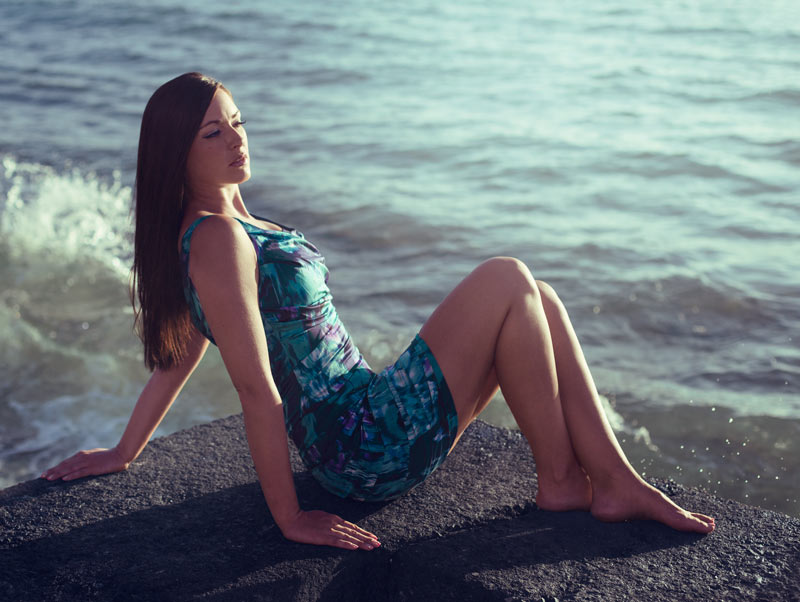
Gestalt Psychology Video Collection Preview
This is a mind-blowing time-lapse video, which shows just a fraction of the rich content within the Gestalt psychology video collection.
The best photographers learn from master painters.
The videos are concise, so you will get nothing but super juicy value for a total of an hour and a half. Saving you time, and giving you exactly what you need!
7 HD videos– Law of Continuity, Figure-Ground Relationship, Law of Proximity, Law of Similarity, Law of Pregnanz, Law of Symmetry, Law of Closure
Total Running Time: 1h 32m
HD Quality: MP4
Download Size: 895.3 MB total
In-Depth Descriptions Quick Links to
All seven Gestalt psychology videos have their own page…loaded with details.
Click on the links below to be magically transported to the secret knowledge you’ve been missing out on.
